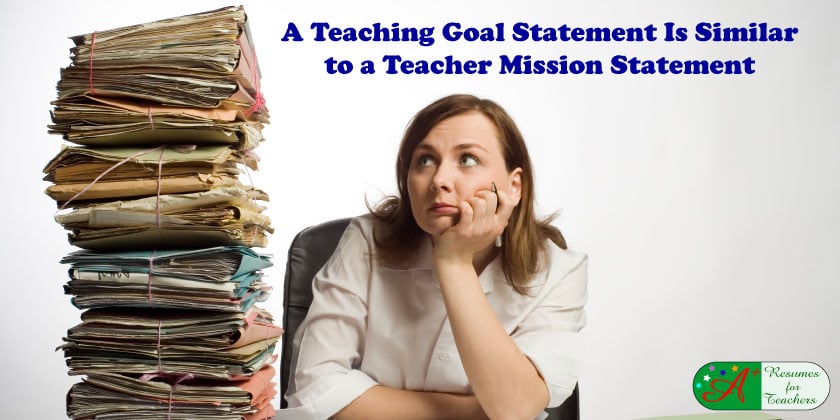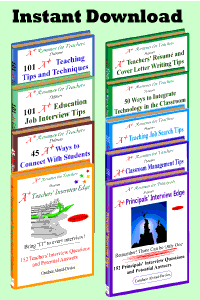Crafting an Effective Teaching Goal Statement: A Guide for Educators
A teaching goal statement serves as a cornerstone for classroom success, similar in essence to a teacher’s mission statement. When written effectively, it becomes a guiding framework that aligns a teacher’s vision with actionable goals, ensuring both student and professional growth.
Below is a comprehensive guide to help you craft, expand, and refine your teaching goal statement. It also includes sample responses for scenarios you may encounter in an interview or thank-you letters.
What Is a Teaching Goal Statement?
A teaching goal statement is a document outlining the objectives an educator wishes to achieve during the school year. Ideally developed before the academic year begins, this statement goes beyond a general vision. It incorporates specific, actionable goals tailored to a teacher’s content area, grade level, and professional development aspirations.
Why Is a Teaching Goal Statement Important?
Clarity of Purpose: It answers the pivotal question:
“What do I want my students to know or be able to accomplish by the end of the school year?”
Focused Planning: It serves as a roadmap, ensuring that the teacher’s efforts remain aligned with measurable student outcomes and personal growth.
Professional Reflection: A well-constructed goal statement motivates teachers to reflect on their practices and adapt as necessary.
Structuring Your Teaching Goal Statement
1. Define Your Primary Goal
Start with a broad, overarching objective. For example:
“By the end of the school year, my students will demonstrate proficiency in fundamental math operations and critical thinking skills applicable to problem-solving in real-world contexts.”
2. Break Down the Goal into Smaller, Actionable Objectives
Smaller objectives make the broader goal attainable. For example:
- Implement differentiated instruction to cater to diverse learning styles.
- Utilize formative and summative assessments to monitor student progress effectively.
- Foster a growth mindset by encouraging perseverance through challenges.
3. Include Professional Development Goals
In addition to student-focused objectives, integrate goals for your growth as an educator. For example:
“Integrate three new technology tools into my teaching practice to enhance engagement and learning outcomes.”
“Attend at least two professional development workshops focused on classroom management strategies.”
Avoiding Overwhelm: Tips for Streamlining Your Goals
Creating a comprehensive teaching goal statement can sometimes feel daunting. Here’s how to keep the process manageable:
Delegate: Share responsibilities with teaching assistants or colleagues where appropriate.
Prioritize: Focus on a few key objectives rather than overloading your list.
Celebrate Small Wins: Recognize incremental progress to maintain motivation.
Seek Mentorship: Collaborate with seasoned educators for guidance and inspiration.
Example Responses for Interview Scenarios
In an interview, hiring committees often inquire about your teaching goals and strategies. Here are sample responses:
Question: “What are your goals as a teacher?”
“My primary goal is to foster an inclusive and dynamic learning environment where all students feel valued and empowered to achieve their potential. For instance, in my math classroom, I aim to integrate hands-on activities and technology to engage students and make abstract concepts more tangible. Additionally, I focus on professional growth by staying updated on instructional strategies and collaborating with colleagues to improve outcomes for all learners.”
Question: “How do you handle setbacks in achieving your goals?”
“Setbacks are an opportunity to reassess and adapt. For example, if a particular teaching strategy doesn’t resonate with students, I gather feedback, consult with peers, and explore alternative methods. I view challenges as stepping stones toward more effective practices and ultimately better outcomes for my students.”
Unusual Circumstances to Address in Thank-You Letters
After an interview, it’s essential to reinforce your candidacy with a thoughtful thank-you letter. Consider addressing specific or unusual circumstances that arose during the interview:
1. Highlight a Memorable Exchange
“Thank you for sharing your insights on integrating SEL (social-emotional learning) into the curriculum. Our discussion inspired me to think more deeply about how I can incorporate mindfulness activities to support my students’ emotional well-being.”
2. Address Concerns Raised in the Interview
“During our conversation, you mentioned challenges with integrating technology into classrooms. I’d love to share some tools I’ve successfully used, such as Flipgrid and Kahoot, which foster engagement and streamline assessments.”
3. Clarify or Expand on a Response
“I realized after our meeting that I could have provided a clearer example of how I differentiate instruction. One recent success was using tiered assignments in a science unit, allowing students to explore content at varying levels of complexity.”
Final Thoughts
A teaching goal statement is not just a document—it’s a living framework that evolves as the school year progresses. By setting clear objectives, staying adaptable, and reflecting on your practices, you can create a meaningful impact in your classroom and your career.
If you need assistance creating your teaching goal statement or preparing for interviews, feel free to reach out for personalized coaching and support. Call toll-free at 1-877-738-8052 or email Candace for more information.


